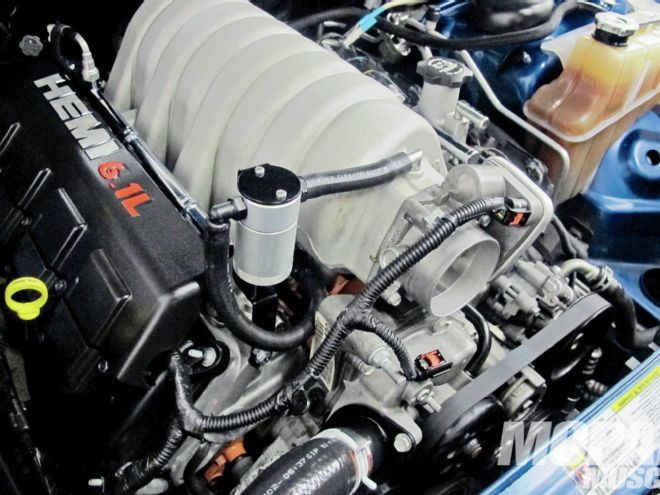
If there’s one thing the readers of this magazine want, it’s more power under the hood of their car. No matter how it’s achieved, the quest for more power has taken many daily drivers and relegated them to only making the occasional trip around the fair grounds. A worst case scenario sees the quest leading to the eventual sale of a person’s hot rod, because the “fun” inevitably goes away.
So, in order for us to help you guys stay on track with making more power, and not getting in over your heads with big modifications that get costly and become daunting tasks, every now and then we need to slow down, and show you guys a simple but effective way to increase power.
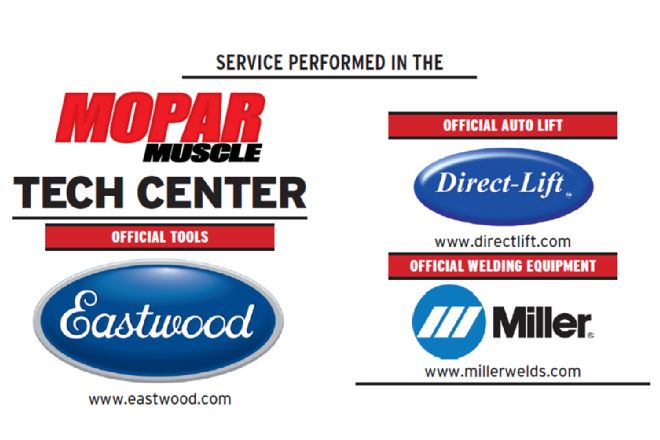
To keep it simple, an engine is nothing more than an elaborate air pump. The more air that goes in, the more air that will get pushed out. For that reason, “cold air” kits for late-model Mopars have really been a popular upgrade for many enthusiasts.
Cold air kits come in many shapes and sizes, but they all market themselves as getting cooler and denser air into your engine. When your car was built, it was designed with sufficient airflow for the stock application, but how many of us leave things “stock”? Most will want to increase the performance of their vehicle, and installing a cold air intake is one way to do it. Simply by name, a “cold air” kit should lower the temperature of the incoming air, thereby increasing power. For that reason, a cold air kit should rely on an air supply that is taken from somewhere outside of the engine compartment. Let’s face it, is just having an open-element air cleaner near the engine really getting cooler air into the engine? Although the factory air cleaner assembly does actually get air from outside of the engine compartment via ducting, the efficiency of the incoming air is severely hampered by the design of the assembly.
Ideally, cold air intakes should also reduce fuel consumption, since they introduce a higher amount of “cooler” air into the engine. This means that burning of fuel is more efficient. Finally, a cold air intake will usually cause your car to be louder, as the new incoming air is not restricted or run through a factory silencer. This new sound causes most people to push the gas to the floor as they enjoy listening to the sound, and that can affect gas mileage.
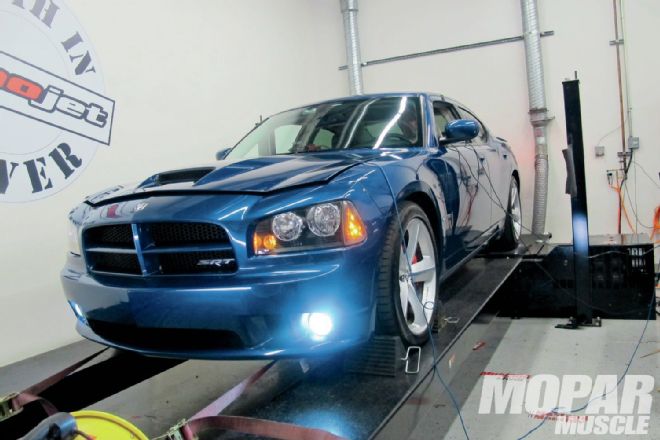 The first thing we did is make a couple pulls with the factory air cleaner assembly in place. We ended up with 342 horsepower at 5,700 rpm. All pulls were made with the hood closed, and a high speed fan feeding air to the front of the car to help simulate the car moving.
The first thing we did is make a couple pulls with the factory air cleaner assembly in place. We ended up with 342 horsepower at 5,700 rpm. All pulls were made with the hood closed, and a high speed fan feeding air to the front of the car to help simulate the car moving.
When we decided to try a cold air intake, and see how it affects a real world, daily driven car, we found that some do simply have an open element air cleaner positioned in the engine compartment. Not feeling that was a truly beneficial way to do it, we found JLT True Cold Air. The first thing we noticed about the JLT kit is the housing that surrounds the air filter. The factory air cleaner assembly got its incoming air from an opening that fed the air from outside the engine compartment into the air cleaner, and the JLT kit uses that opening to also get air to its air filter. But, the kicker is, the JLT kit has a “surround” around the air filter that keeps the engine heat from entering the air filter. That seemed like a great idea, so we ordered one.
When we placed our order, JLT wanted know what color the car was, because they are capable of color-matching the intake tube to your factory color. That was an added bonus that we really liked. Anyway, we ordered the air cleaner assembly, and decided to add one more item to our shopping list, an oil separator.
With late-model vehicles, the process of venting crankcase pressure sends that pressure back through your intake. If that pressure is going back into your intake, this also means that oil vapors can also be brought into the intake. If you’re running a blower, this can coat your blower rotors, intercooler fins and even dilute your gas, lowering its octane level. This happens on all engines, and is even worse when that engine is supercharged, as crankcase pressures are increased.
To combat this, JLT has developed an oil separator that is milled from billet aluminum. It has a knurled tank-base for easy removal, so draining the spent oil is easy. Inside is a metal-mesh filter element. This element collects the vapors allowing them to drop into the tank. This keeps the oil vapors out of your engine.
OK, so let’s get to it. The install of both parts took less than an hour, and is accomplished with a few simple hand tools.
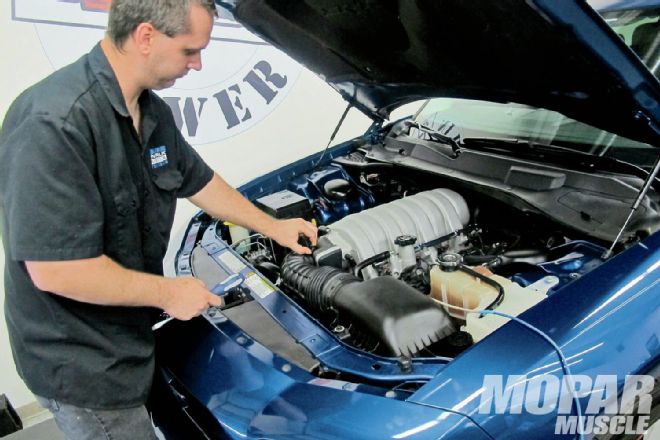 01 With the baseline complete, we removed the factory air cleaner assembly. During our baseline test, a new OE paper filter was installed the factory assembly for our testing.
01 With the baseline complete, we removed the factory air cleaner assembly. During our baseline test, a new OE paper filter was installed the factory assembly for our testing.
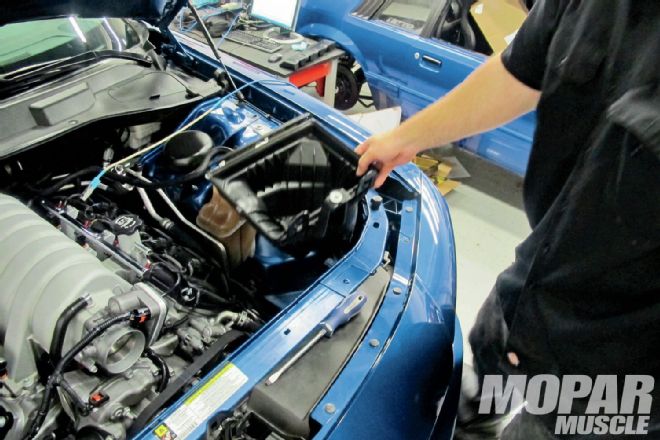
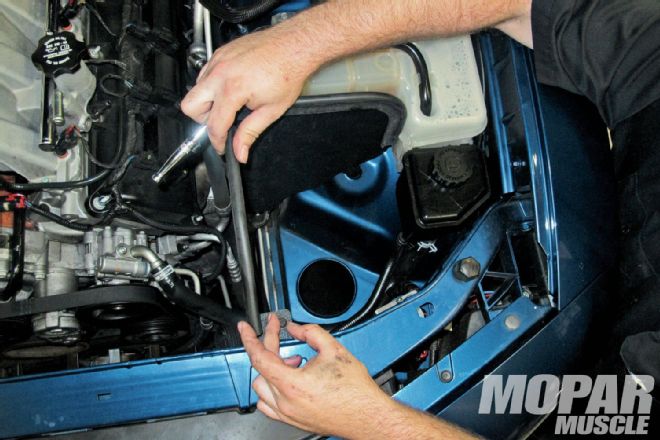 02 The JLT kit comes with this surround that encloses the air filter and separates it from the engine compartment. The hole at the bottom is where the factory air cleaner got its cool air.
02 The JLT kit comes with this surround that encloses the air filter and separates it from the engine compartment. The hole at the bottom is where the factory air cleaner got its cool air.
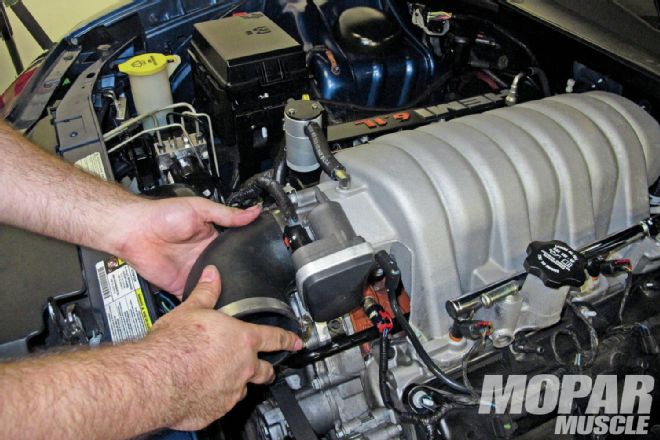 03 The instructions say that it’s easier to install the air cleaner as a complete assembly. We read the instructions after we were finished. That’s why we’re installing the soft elbow at the throttle body in this image.
03 The instructions say that it’s easier to install the air cleaner as a complete assembly. We read the instructions after we were finished. That’s why we’re installing the soft elbow at the throttle body in this image.
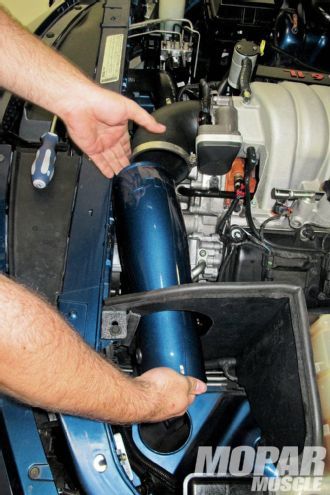 04 Painted to match the car, the inlet tube is connected to the throttle body elbow.
04 Painted to match the car, the inlet tube is connected to the throttle body elbow.
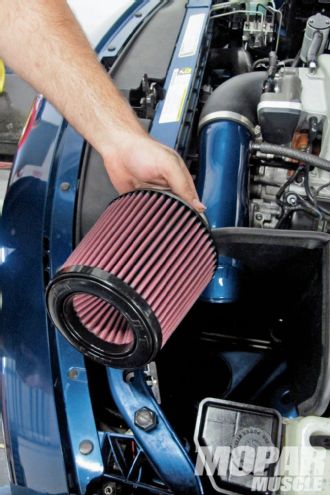 05 The JLT kit offers you a choice with regard to air filters. If you’re wondering, “Should I choose a paper or cotton filter?” according to JLT, Paper filter design has improved drastically over the last few years, so you are not sacrificing performance with either choice, the decision comes down to would you rather throw away the filter or clean it when the time comes.
05 The JLT kit offers you a choice with regard to air filters. If you’re wondering, “Should I choose a paper or cotton filter?” according to JLT, Paper filter design has improved drastically over the last few years, so you are not sacrificing performance with either choice, the decision comes down to would you rather throw away the filter or clean it when the time comes.
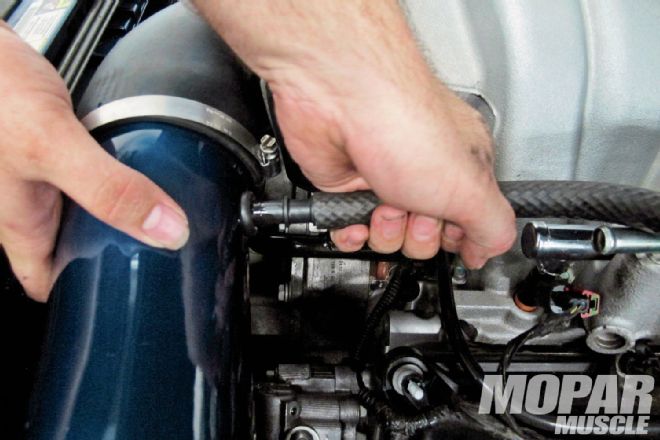 06 Plug in the PCV per the instructions.
06 Plug in the PCV per the instructions.
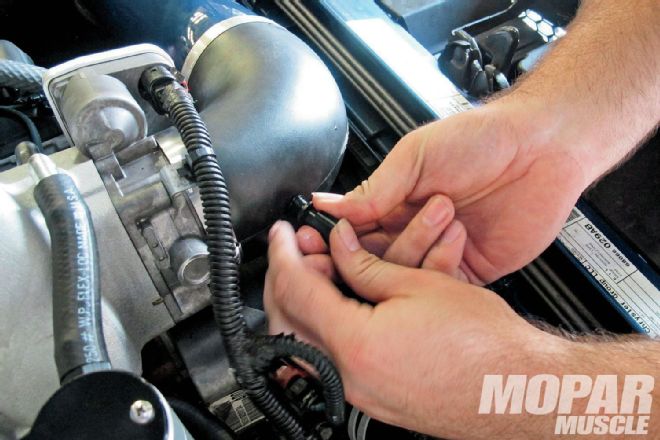 07 Now reinstall the IAT (Inlet Air Temperature) sensor that you removed from the factory air cleaner assembly.
07 Now reinstall the IAT (Inlet Air Temperature) sensor that you removed from the factory air cleaner assembly.
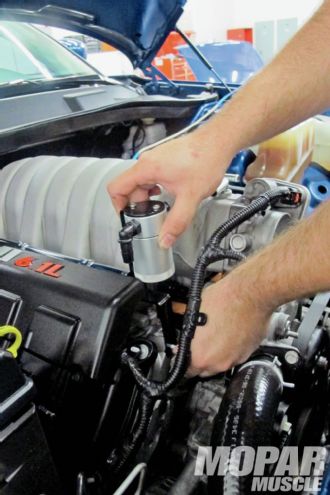 08 Not only did we install the JLT cold air kit, but we also opted to install one of their oil separator kits. Venting crankcase pressure lets that pressure back through your intake. If that pressure is going back into your intake, this also means that oil vapors can also be brought into the intake. The oil separator eliminates this issue.
08 Not only did we install the JLT cold air kit, but we also opted to install one of their oil separator kits. Venting crankcase pressure lets that pressure back through your intake. If that pressure is going back into your intake, this also means that oil vapors can also be brought into the intake. The oil separator eliminates this issue.
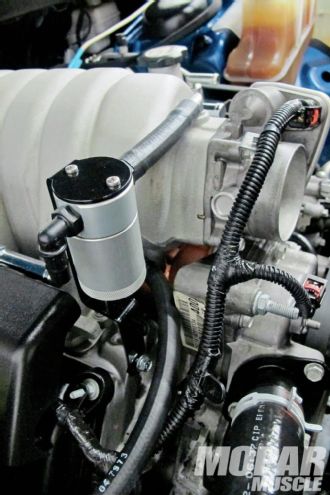 09 The separator mounts to the cylinder head with a supplied bolt, and the plumbing is as simple as running two hoses, one to the intake, right behind the throttle body…
09 The separator mounts to the cylinder head with a supplied bolt, and the plumbing is as simple as running two hoses, one to the intake, right behind the throttle body…
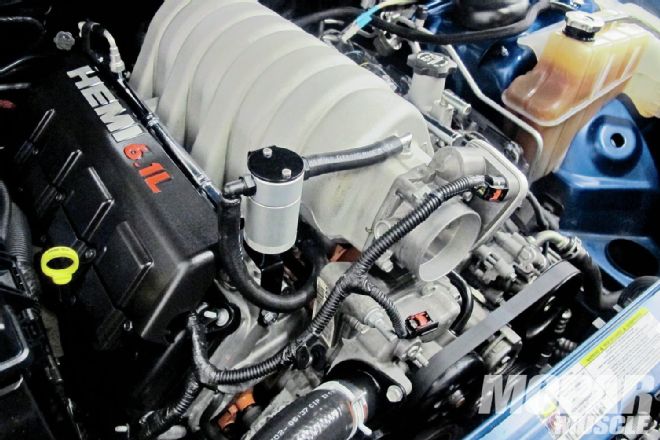 10 …and the other goes to the PCV valve under the throttle body—done.
10 …and the other goes to the PCV valve under the throttle body—done.
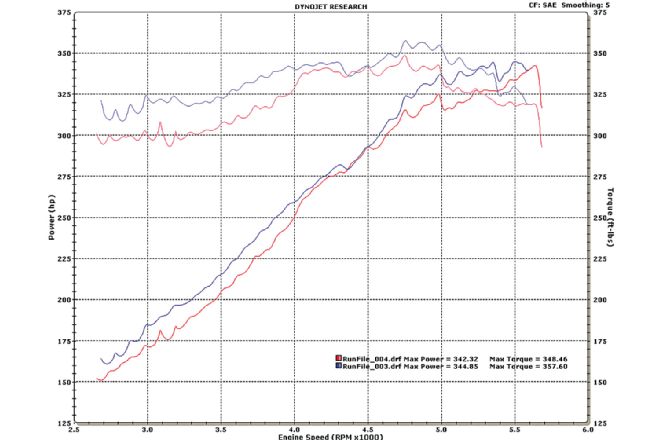 11 We did our testing with the hood closed, and a high-velocity fan blowing at the front of the car to simulate movement, as if the car was driving. You can't correctly test a cold-air kit with the hood open, as you'll get false results. We were hoping to gain more than 2-1/2 horsepower and 9 lb-ft of torque, but this was with a stock engine. Add a performance tune or other upgrade and the results will be exponential.
11 We did our testing with the hood closed, and a high-velocity fan blowing at the front of the car to simulate movement, as if the car was driving. You can't correctly test a cold-air kit with the hood open, as you'll get false results. We were hoping to gain more than 2-1/2 horsepower and 9 lb-ft of torque, but this was with a stock engine. Add a performance tune or other upgrade and the results will be exponential.